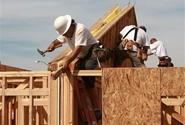Analysis

August 15, 2016
Housing Starts Gain 2.1 Percent in July
Written by Sandy Williams
Housing starts increased 2.1 percent in July to a seasonally adjusted annual rate of 1,211,000 from a revised June estimate of 1,186,000, according to data from the U.S. Census Bureau and Department of Housing and Urban Development. The increase was the highest level since February. Starts were 5.6 percent above the July 2015 rate.
Multi-family starts outpaced single family, rising 8.3 percent from June. Single family starts increased 0.5 percent from the previous month. On a year over year basis single family starts were up 1.3 percent while structures with five units or more gained 15.2 percent.
Permit authorizations, an indicator of future construction, were nearly the same as last month, inching downward 0.1 percent to a SAAR of 1,152,000 units. Permits were 0.9 percent above the July 2015 estimate.
Authorization of permits for single family housing were at a rate of 711,000, 3.7 percent below the revised June rate. Multi-family structures of five units or more increased 6.5 percent from June.
A joint economic forecast released Monday by the Associated Builders and Contractors, American Institute for Architects and National Association of Home Builders expects gradual expansion of the residential construction sector.
“Our forecast shows single-family production expanding by more than 10 percent in 2016, and the robust multifamily sector leveling off,” said NAHB Chief Economist Robert Dietz. “Historically low mortgage interest rates and favorable demographics should keep the housing market moving forward at a gradual pace, but residential construction growth will be constrained by shortages of labor and lots and rising regulatory costs.”
AIA, Chief Economist Kermit Baker concurs, “Revenue at architecture firms continues to grow, so prospects for the construction industry remain solid over the next 12 to 18 months. Given current demographic trends, the single-family residential and the institutional building sectors have the greatest potential for further expansion at present.”







